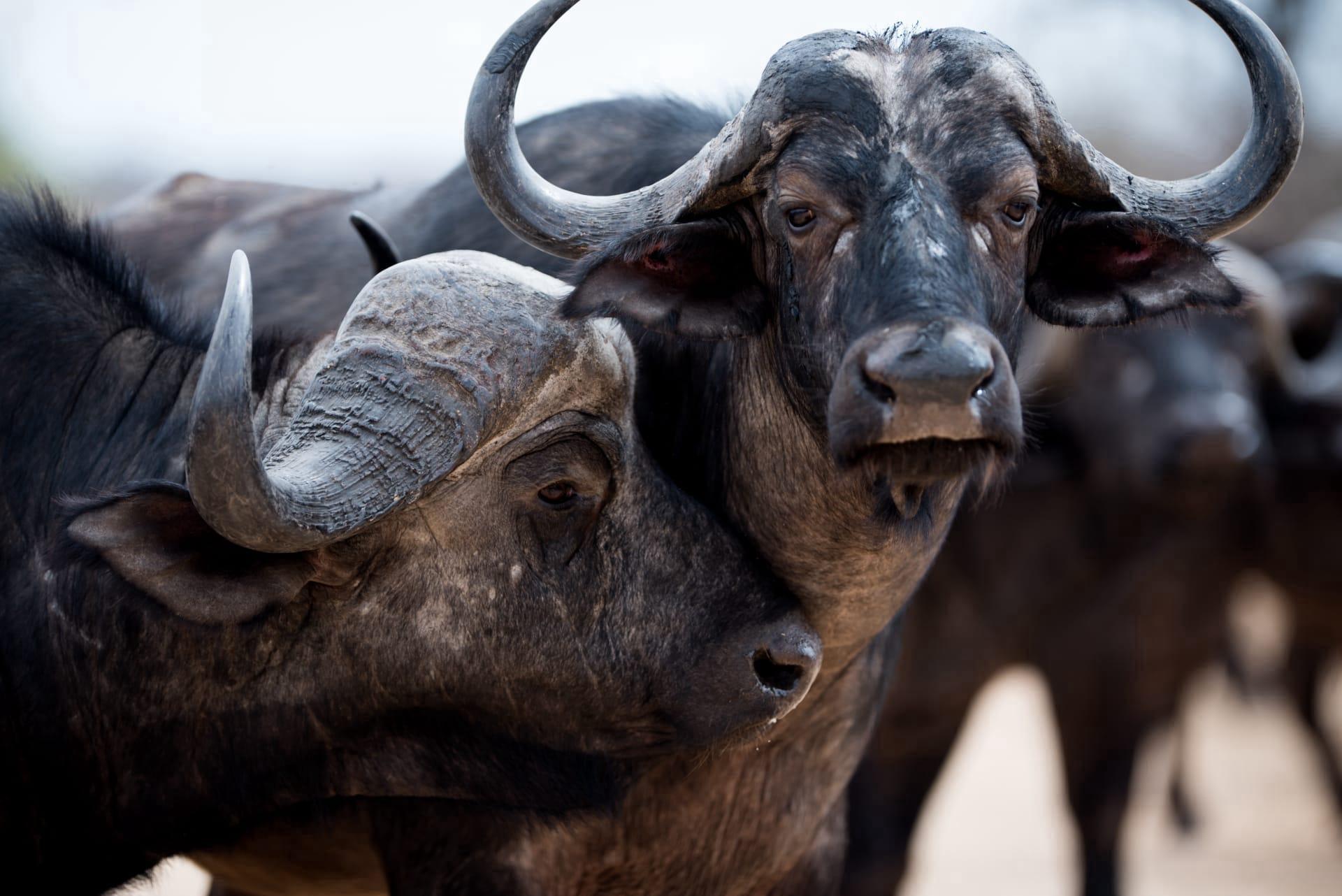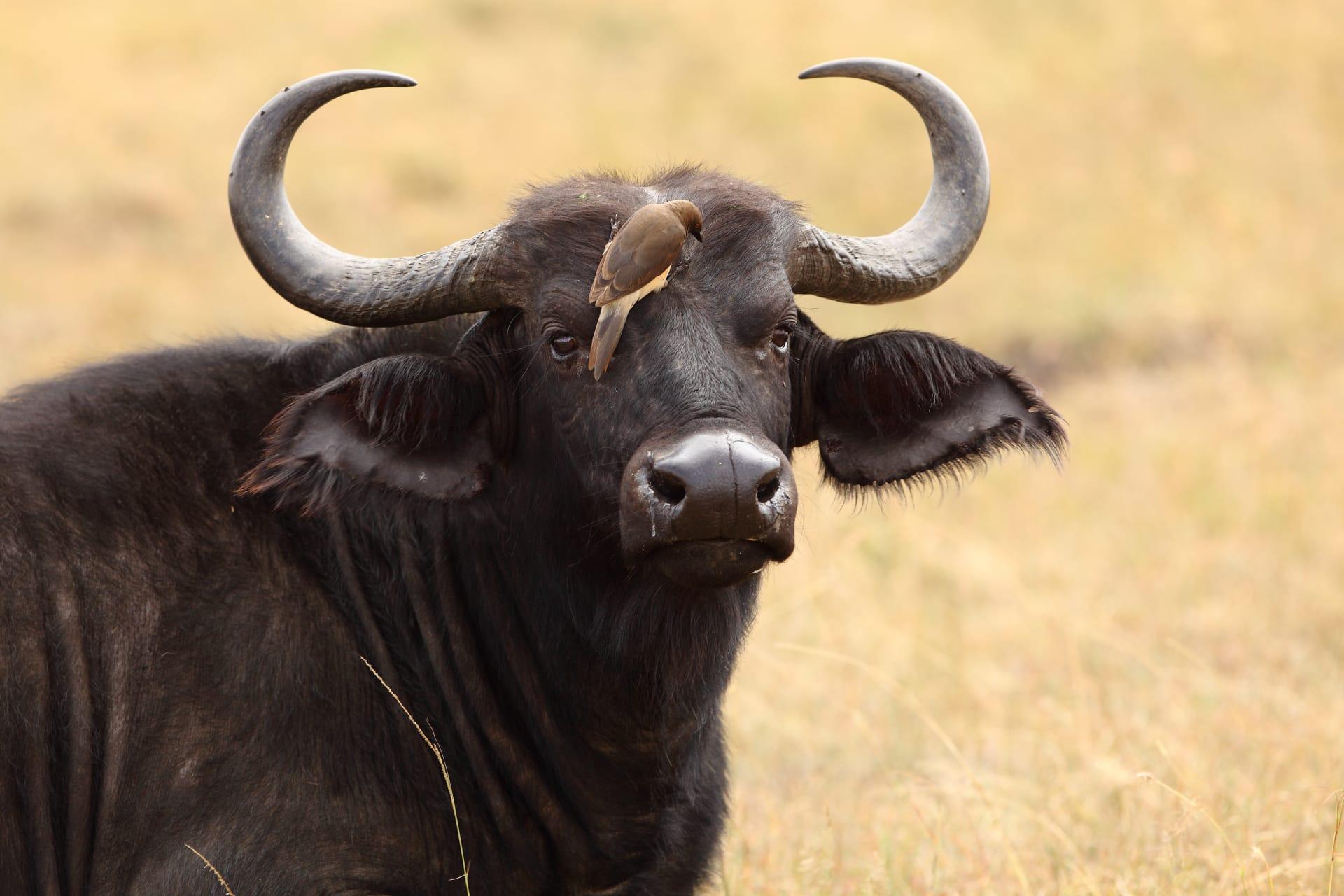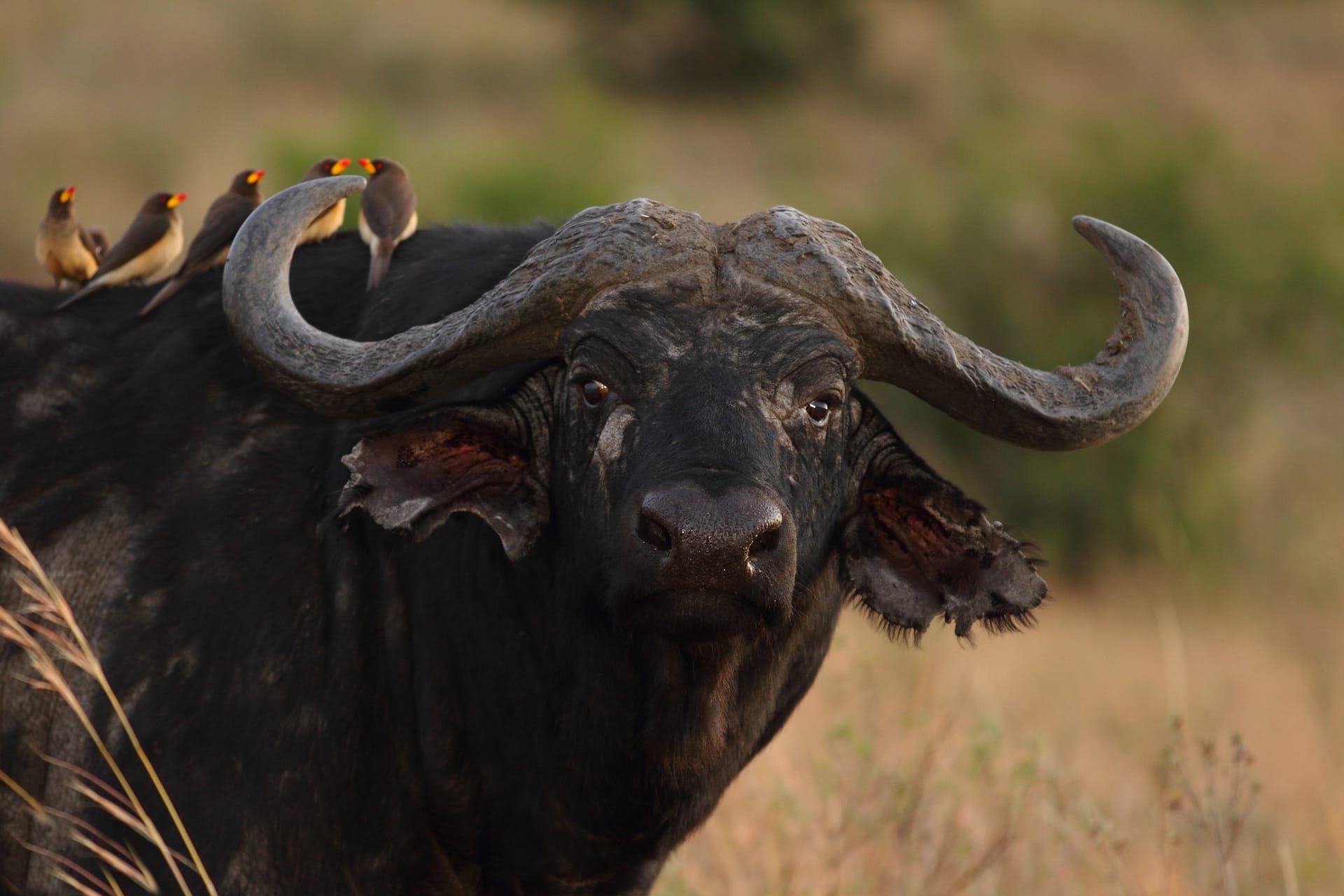African Buffalo Characteristics
- Home /
- Mini Encyclopedia /
- Animal /
- African Buffalo Characteristics
1
The African Buffalo, scientifically known as Syncerus caffer, is a robust creature, renowned for its formidable size and strength. Adult males can weigh between 500 to 900 kilograms, standing about 1.5 meters tall at the shoulder. Females are slightly smaller. These animals boast a lifespan of around 20 to 30 years in the wild, though this can vary based on environmental factors and predation pressures. Their coats are generally dark brown or black, with a dense, tough hide that helps them endure the harsh savanna conditions.
One of the most distinctive organs of the African Buffalo is its intricate horn structure. These horns, which can span over one meter across, are not just for show. They play a crucial role in defense, both against predators like lions and in battles for dominance within their herds. The horns' unique shape, with a heavy boss at the base and a sweeping curve, is designed for powerful butting and goring, making them effective weapons in the buffalo's survival arsenal.

2
Question: What are the primary threats to the African Buffalo in the wild?
Answer: The African Buffalo faces several threats in its natural habitat. Predation by large carnivores like lions and hyenas is a constant danger, especially for young or ill members of the herd. Human activities pose a significant threat as well, including habitat loss due to agricultural expansion and deforestation. Additionally, they are susceptible to diseases like bovine tuberculosis and foot-and-mouth disease, which can be devastating to both wild herds and domestic cattle. Conservation efforts are in place to mitigate these threats, focusing on habitat preservation and disease management.

3
The African Buffalo is known for its endurance rather than speed. They can maintain a steady trot for long distances, which is effective during migrations or when escaping from predators. Despite their bulky build, they are capable of running at speeds up to 57 kilometers per hour in short bursts. This speed, combined with their agility, makes them formidable opponents in the wild.
In terms of feeding, African Buffaloes are primarily grazers. Their diet mainly consists of grass, which they consume in large quantities to sustain their massive size. They prefer tall, coarse grass and have a unique way of feeding, using their wide, muscular tongues to wrap around and pull up the grass. They are also known to feed on other vegetation like herbs and shrubs, especially during times when grass is scarce.

4
The African Buffalo predominantly inhabits the grasslands, savannas, and floodplains of sub-Saharan Africa. They require a habitat with dense vegetation for food and access to water sources, as they need to drink daily. These environments also provide them with cover for protection against predators. Buffaloes are not typically found in deserts or rainforests, as these environments do not meet their dietary and water needs.
Reproduction in African Buffaloes is closely linked to their environmental conditions, particularly the availability of water and food. They do not have a specific breeding season, but birth peaks usually occur during the rainy seasons when resources are abundant. A single calf is born after a gestation period of about 11 months. Calves are nurtured within the herd, where they benefit from the protection and social structure of the group. Females reach sexual maturity at about five years of age, while males mature a bit later.

5
Book: "The African Buffalo: A Study of Resource Limitation of Populations" explores the dynamic balance between African Buffaloes and their environment. Authored by H.H.T. Prins, this detailed study, published in the Netherlands in the 1990s, delves into the complex interactions between buffalo populations and the resources available in their habitats. Prins uses extensive field research to illustrate how these animals adapt to varying conditions and the implications for conservation efforts.
Book: "Buffalo: Natural History and Conservation" by J. David Taylor, published in the UK during the 2000s, offers a comprehensive look at the species, including the African Buffalo. Taylor's book focuses on the behavior, ecology, and conservation of buffaloes worldwide. It provides insights into their social structure, feeding habits, and the challenges they face in the modern world. The book is a valuable resource for understanding the role of these majestic animals in their ecosystems and the efforts needed to protect them.